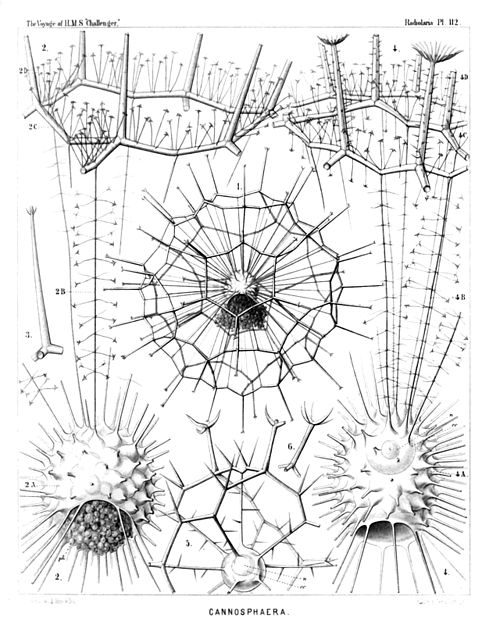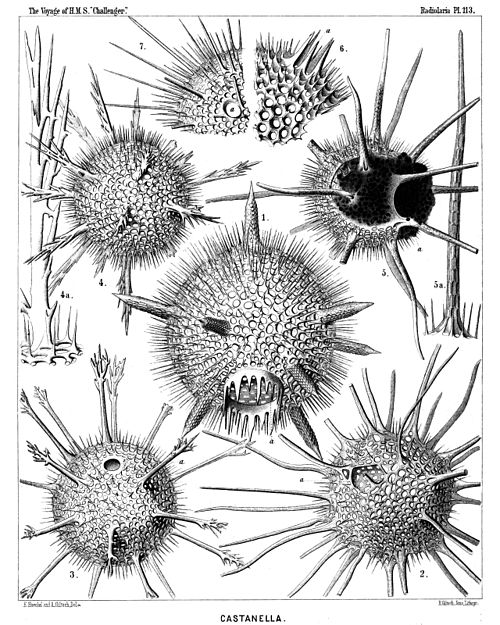Report on the Radiolaria/Plates12
PLATE 111.
Legion PHÆODARIA.
Order PHÆOSPHÆRIA.
Family Aulosphærida.
|
||||||||||||||||||||||||||||||||||||||||||||||||||||||||||||||||||||||||||||||||||||||||
PLATE 112.
Legion PHÆODARIA.
Orders PHÆOSPHÆRIA.
Family Cannosphærida.
|
||||||||||||||||||||||||||||||||||||||||||||
PLATE 113.
Legion PHÆODARIA.
Order PHÆOGROMIA.
Family Castanellida.
|
|||||||||||||||||||||||||||||||||||||||||||||||||||||
PLATE 114.
Legion PHÆODARIA.
Orders PHÆOCYSTINA et PHÆOGROMIA.
Families Cannorrhaphida et Circoporida.
|
||||||||||||||||||||||||||||||||||||||||||||||||||||||||||||||||||||||||||||||
PLATE 115.
Legion PHÆODARIA.
Order PHÆOGROMIA.
Family Circoporida.
|
|||||||||||||||||||||||||||||||||||||||||||||||||||||||||||||||
PLATE 116.
Legion PHÆODARIA.
Order PHÆOGROMIA.
Families Medusettida et Circoporida.
|
|||||||||||||||||||||||||||||||||||||||||||
PLATE 117.
Legion PHÆODARIA.
Orders PHÆOCYSTINA ET PHÆOGROMIA.
Families Cannorrhaphida, Medusettida et Circoporida.
|
||||||||||||||||||||||||||||||||||||||||||||||||||||||||||||||||||||
PLATE 118.
Legion PHÆODARIA.
Order PHÆOGROMIA.
Family Medusettida.
|
||||||||||||||||||||||||||||
PLATE 119.
Legion PHÆODARIA.
Order PHÆOGROMIA.
Family Medusettida.
|
|||||||||||||||||||||||||||||||||
PLATE 120.
Legion PHÆODARIA.
Order PHÆOGROMIA.
Family Medusettida.
|
|||||||||||||||||||||||||||||||||||||||||||||||||||||||||||||||||||||||||||||||||||||||||










